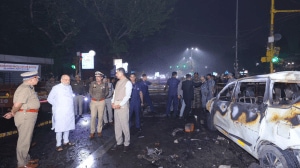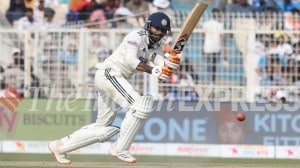Story continues below this ad
The Andhra Pradesh Cabinet has also approved the draft ordinance proposal made by the Social Welfare Department to implement sub-categorisation among Scheduled Castes in the state on 15th April.
Key Takeaways:
1. This comes after a seven-judge Constitution Bench in Davinder Singh v State of Punjab (August 2024) that allowed further sub-classification of SCs and STs to ensure the grant of quota to more backward castes inside these groups. The sub-classification of SCs and STs was introduced since reservations were introduced in the Constitution in 1950.
2. The Seven-judges Bench, headed by then Chief Justice of India D Y Chandrachud in a 6:1 ruling, permitted states to create sub-classifications within the SC and ST categories for the purpose of according wider protections — through fixed sub-quotas — to the most backward communities within these categories.
3. This judgement overturns the apex court’s 2004 decision in E V Chinnaiah v State of Andhra Pradesh, in which it had held that the SC/ST list is a “homogenous group” that cannot be divided further. The Court has stated that micro-classification of SCs was unconstitutional.
Story continues below this ad
4. In 1975, Punjab issued a notification giving first preference in SC reservations to the Balmiki and Mazhabi Sikh communities, two of the most backward communities in the state. In 2006, the Punjab & Haryana High Court in Dr. Kishan Pal v State of Punjab struck down the 1975 notification. However, the very same year, the Punjab government again passed the Punjab Scheduled Caste and Backward Classes (Reservation in Services) Act, 2006, reintroducing the first preference in reservations for the Balmiki and Mazhabi Sikh communities.
5. This Act was challenged by Davinder Singh, a member of a non-Balmiki, non-Mazhabi Sikh SC community. The HC, in 2010, struck down the Act, leading to an appeal at the Supreme Court. In 2014, the case was referred to a five-judge Constitution Bench to determine if the E V Chinnaiah decision had to be reconsidered.
6. In 2020, the Justice Arun Mishra-headed Constitution Bench in Davinder Singh v State of Punjab noted that the court and the state “cannot be a silent spectator and shut its eyes to stark realities” and therefore, there is a need to reconsider the 2004 decision. Eventually, in 2024, a seven-judge bench was constituted, which passed this judgement.

Constitutional articles that were addressed in the Davinder Singh v State of Punjab case:
1. Article 341 (1) of the Constitution allows the President, through a public notification, to list as SC “castes, races or tribes” that suffered from the historical injustice of untouchability. SC groups are jointly accorded 15% reservation in education and public employment. Article 341 (2) only empowers the President to issue such a notification, and Parliament to make additions or deletions to the list.
Story continues below this ad
2. In the E V Chinnaiah case court held that SC must be treated identically, without taking into account the relative backwardness. In the Davinder Singh judgment, CJI Chandrachud rejected this premise, stating that the Presidential list of SCs is a “legal fiction” — something that does not exist in actuality but is “treated as real and existing for the purpose of law”. CJI Chandrachud said this legal fiction cannot be “stretched” to claim that there are no “internal differences” among SCs.
3. Article 15 provides the state power to make provisions for the advancement of SCs. Article 16 gives states the specific power to provide “reservations of appointments or posts in favour of any backward class of citizens which…is not adequately represented in the services of the State”. In E V Chinnaiah, the court held that the state can’t sub-classify a class already recognised by the Constitution and allot a portion of the already reserved quota amongst the State-created sub-class within the SC list.
4. In the Davinder Singh judgment, the court held that “the State in exercise of its power under Articles 15 and 16 is free to identify the different degrees of social backwardness and provide special provisions (such as reservation) to achieve the specific degree of harm identified”.
| Census 2011 |
| According to the 2011 census, the population of Scheduled Castes is 16.6 per cent and Scheduled Tribes is 8.6 per cent, together forming a quarter of the total population. In the period 2001-11, the SCs grew by 20.8 per cent and STs by 23.7 per cent. The highest SC population,31.9 per cent of the state’s total number, is in Punjab. |
BEYOND THE NUGGET: National Commission for Scheduled Castes (NCSC)
1. The NCSC is a Constitutional body set up under Article 338 of the Constitution of India to safeguard and promote the welfare of Scheduled Castes (SCs) in India. The purpose of the commission is to provide safeguards to SCs against exploitation and protect their social, educational, economic, and cultural interests.
Story continues below this ad
2. By the Eighty-Ninth Constitutional Amendment Act, 2003, the erstwhile National Commission for Scheduled Castes & Scheduled Tribes was replaced by the National Commission for Scheduled Castes and the National Commission for Scheduled Tribes.
3. The NCSC comprises of Chairperson, the Vice-Chairperson, and three other Members. Besides making an appointment, the conditions of service and tenure of office of the Commission are determined by the President. The first National Commission was established in the year 2004. The current chairperson is Shri Kishor Makwana.
Post read question
Consider the following organizations/bodies in India:
1. The National Commission for Scheduled Castes
2. The National Human Rights Commission
3. The National Law Commission
4. The National Consumer Disputes Redressal Commission
How many of the above constitutional bodies?
(a) Only one
(b) Only two
(c) Only three
(d) All four
Subscribe to our UPSC newsletter. Stay updated with the latest UPSC articles by joining our Telegram channel – IndianExpress UPSC Hub, and follow us on Instagram and X.
🚨 Click Here to read the UPSC Essentials magazine for March 2025. Share your views and suggestions in the comment box or at manas.srivastava@indianexpress.com🚨



































